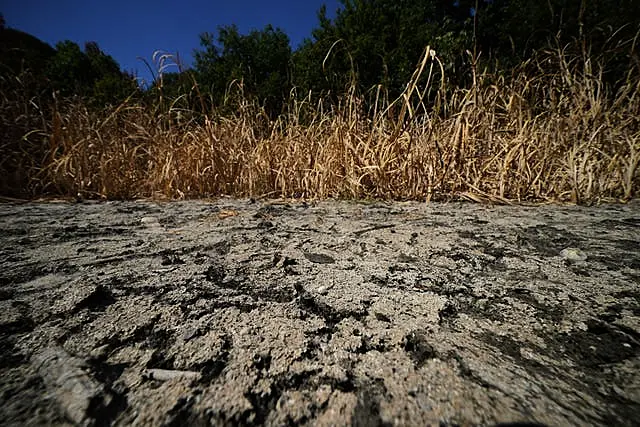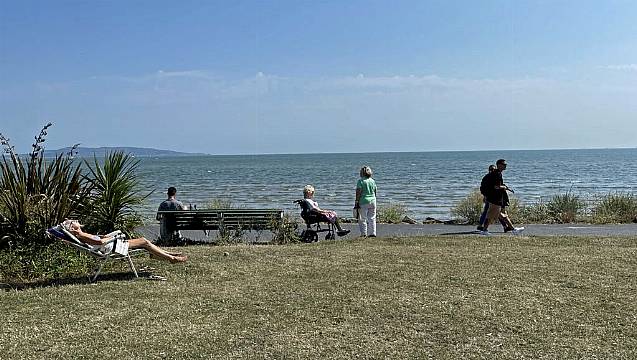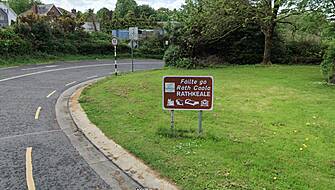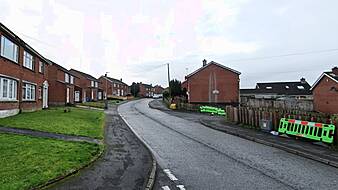Warmer weather may see construction standards change to ensure buildings are better able to cool down in the summer, while staying warm during colder months.
Forecaster Met Éireann has published a series of technical reports and maps aimed at informing how future Irish buildings and infrastructure should be designed to withstand extreme weather events.
In June last year, the Government agreed to establish a National Framework for Climate Services (NFCS), led by Met Éireann, to co-ordinate providing reliable climate data.
In a joint initiative with the Department of Housing’s building standards team, research carried out by the forecaster was published on Thursday that looks at how Ireland’s climate is projected to change in the coming decades, with an aim of informing how that could change building standards and designs.
This includes temperature, rainfall, snow loading, and soil temperature projections.
The head of Met Éireann’s climate services division, Keith Lambkin, told the PA news agency that climate adaptation looks at how to tweak systems to withstand temperature stresses and more frequent storms, for example.
“Up to this point, our buildings, our bridges and our roadways, they’ve all been built with climate in mind,” he said.
“So for example, the gutters on the side of your house or dwelling, the depth of them is such that you should be able to handle the type of rainfall you get in your particular area.

“The drainage on the side of a roadway, again, is all based on what that area is likely to get. It’d be a different drainage dimension in part of America or parts of Australia than we have in Ireland for those reasons.
“We know from climate change, as we look into the future, we know it’s going to get warmer, and that warming has a lot of knock-on consequences as well.
“So if we’re building something now that’s going to last 50, 70, 100 years’ time, we want to make sure that it’s resilient against these future potential weather extremes.”
He said that temperature is one factor that should be taken into account for how structures should be built.
He said that this would include ensuring bridges are able to cope with temperature stresses in the future, such as the expansion and contraction of steel.
“In Ireland, we’ve typically built all our buildings to keep the heat in, historically. Whereas now, what we’re seeing is we’re likely to see more increases in extreme temperatures in Ireland and longer prolonged heatwaves as well, (that’s) what the climate models are suggesting for Ireland.
“So that means if we’re building, let’s say, a nursing home, that nursing home is going to be around for 70 years, we have to make sure that when that’s built, it’s also capable of cooling itself into the future, as well as keeping itself warm during the winter.
“So it’s helping to build things more resilient, and to be able to adapt to those future changes. So people inside a building are still comfortable in the future.”
He said that while temperature increases are easier to predict, preparations for snow and rain are more complicated.
“So what the models are telling us, into the future, is that we’re likely to see, give or take, around the same amount of rainfall per annum – a little bit more, but that’s kind of in line with a warmer environment.
“But the interesting signal we’re expecting to see is a change in the pattern of that rainfall.
“So we’re expecting to see more heavy rainfall events during winter months and autumn months, and less rainfall events on average during the summer.”
He said that one of the reports looks at “these sudden heavy bursts of rain”, as that’s when storm and drainage systems could become overwhelmed, which could indicate what level of planning is needed to cope with the weather shift.
Another report looks at whether more heavy snow is expected over the next 50, 100 and 120 years, as this could affect the load-bearing capabilities of bridges and Irish buildings’ roofs.
Mr Lambkin told PA: “Snow is a difficult one to say how it’s going to change into the future.
“It makes it very hard to plan for because if we don’t get a snow event for 10 years, should we have a fleet of snow ploughs? But then when a big one does come along, and we don’t have a snow plough, it’s similar.”
The research will be used to inform national standards and guidance documents to ensure Irish buildings remain resilient to the changing climate over their intended lifespan.
Mr Lambkin said that several similar tailored adaptation plans will also be produced for other sectors, such as: transport, health and water infrastructure, to help make decisions on how to adapt to climate change.
The work was done working with a steering group made up of representatives from the National Standards Authority of Ireland, Sustainable Energy Authority of Ireland and members of the Department’s building standards committee.







